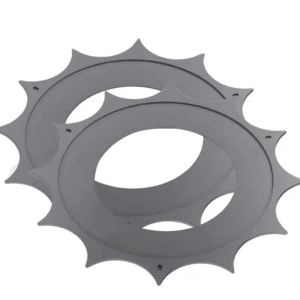燃料電池の膜 水素燃料電池は、有害排出ゼロで効率的なエネルギー変換を可能にすることで、水素燃料電池の重要な役割を果たしています。 この高度の部品はそれを作るきれいなエネルギーの生産のために必要な電気化学反応を促進します 再生可能エネルギー分野に不可欠. . カスタマイズのカスタマイズ Membrane Electrode Assembly (MEA) 性能と耐久性を高め、さまざまな用途の特定の要求を満たします。 によって mEAsの最適化、企業は交通機関、発電および他の重要な区域の水素燃料電池の採用を運転する高性能および費用効果が大きい達成できます.

要点
- 燃料電池膜電極アセンブリ(MEA)は、水素燃料電池の効率的なエネルギー変換のために不可欠であり、有害な排出ゼロでクリーンエネルギーの生産を可能にします.
- MEAsのパフォーマンスと耐久性をカスタマイズし、自動車や静止した電力システムなどの特定のアプリケーションに適しています.
- MEAの設計と材料の最適化は、エネルギー変換効率を大幅に向上させ、コストを削減し、水素燃料電池の魅力を高めることができます.
- 水素燃料電池は副産物としてだけ水を発生させ、ゼロエミッションエネルギーシステムのための重要な技術として位置付けます.
- カスタマイズ MEAsは、再生可能エネルギーへの移行をサポートし、様々な産業に活力のある代替手段を提供することで、化石燃料の信頼性を低下させます.
- 水素燃料電池の汎用性は、先進のMEAによって有効化され、輸送、産業、発電の多様な用途に統合することができます.
- グローバルな持続可能性の目標に合わせてカスタマイズしたMEAsは、温室効果ガス排出量を削減し、よりクリーンでグリーンな未来を促進するための重要な役割を果たしています.
水素燃料電池における燃料電池膜電極の役割
膜電極アセンブリ(MEA)の理解
主要コンポーネント: 膜、触媒層、ガス拡散層
膜電極アセンブリ(MEA)は、 水素燃料電池のコア、エネルギーを発生させる重要な電気化学反応を有効にします。 3つの主要なコンポーネントで構成されています
- ログイン: プロトン・エクスチェンジ・メンブレン(PEM)は選択的な障壁として機能し、プロトンだけが電子をブロックしながら通過することを可能にします。 電力の流れを維持するためには、この分離が重要です.
- 触媒層: : : これらの層は、通常プラチナでコーティングされ、陽極および陰極の化学反応を促進します。 触媒は、効率的な水素酸化と酸素還元を保証します.
- ガス拡散層(GDL):触媒層の両側に位置するGDLは、触媒面にガスを均等に分散させます。 反応中に生成された水を除去することも支援します.
各コンポーネントは、MEA が効果的に動作するように異なる役割を果たしています。 研究者は、これらの層を継続的に最適化し、ガス拡散を改善し、電子およびプロトン伝導を高め、水除去を効率的に管理します.
MEAが電気化学反応を駆動する方法
水素をプロトンや電子に分離することにより、電気化学反応を駆動します。 陽極では、水素分子は、触媒の助けを借りて、プロトンと電子に分割します。 プロトンは、電子が外部回路を通過しながら、ペムを陰極に渡します。 陰極、プロトン、電子、酸素は、唯一の副産物として水を形成するために結合します。 このプロセスは、クリーンエネルギーの生産を可能にするためにMEAのピボタルの役割を強調します.
燃料電池の性能におけるMEAの重要性
高エネルギー変換効率の確保
メア 直接エネルギー変換に影響を与える 水素燃料電池の効率。 設計は電子およびプロトンの流れへの抵抗を最小にし、最高のエネルギー出力を保障します。 研究はそれを強調する mEAのアーキテクチャを最適化 そして材料は性能を著しく高めます。 例えば、PEMの厚さを減らし、触媒分布を改善することで、エネルギー損失を削減し、効率性を高めます.
燃料電池の耐久性そして長寿を高めて下さい
耐久性は燃料電池技術の重要な要因を残します。 MEAの堅牢な構造により、さまざまな動作条件下での長期的性能が保証されます。 膜および触媒層の先端材料は分解に抵抗します、GDLsは構造の完全性を維持します。 MEAの耐久性を強化することにより、燃料電池は長期にわたって確実に動作し、メンテナンスコストを削減し、広範な採用のためのアピールを高めることができます.
MEAのカスタマイズが不可欠である理由

特定のアプリケーションにMEAsを適応させる
自動車適用: 高い発電密度および堅牢性
自動車燃料電池は車の厳密な条件を満たすために高い発電密度および例外的な耐久性を要求します。 カスタマイズされた膜電極アセンブリ(MEAs)は、設計と材料を最適化し、性能を向上させることによって、これらのニーズに対処します。 例えば、自動車MEAの触媒層は、運転中の機械的ストレスに耐えながら、最大のエネルギー出力を提供するように設計されています。 標準的なMEAsで見落とされる転移区域は、カスタマイズされた設計の特別な注意を受け取ります。 この領域の適切なstructuringは最小化します 機械的劣化 によって引き起こされる hygro熱環境、長期信頼性を保障します。 この調整されたアプローチは、堅牢性と効率性がパラマウントされている自動車用途に欠かせないカスタマイズされたMEAsを作ります.
静止した電力システム:長寿および安定性
バックアップジェネレータやグリッドサポートソリューションなどの静止した電力システム、長寿と運用安定性を優先します。 摩耗を抵抗し、長期にわたって引き裂く高度材料を組み込むことによって、これらの適用のカスタマイズされたMEAsエクセル。 重要なまだ脆弱な領域であるトランジション領域は、 初期膜の故障を防ぐ. . MEAの寿命を大幅に延ばし、メンテナンスコストとダウンタイムを削減します。 また、触媒ローディングの精密な校正により、変動条件下でも一貫したエネルギー生産を実現します。 固定システムのユニークな要求に対応することにより、MEAsは、長期にわたるエネルギーニーズの信頼性と持続可能なソリューションを提供します.
効率の向上とコストの削減
コスト効率性のための触媒利用の最適化
触媒は、しばしばプラチナで構成され、MEAの最も高価なコンポーネントの1つです。 カスタマイズされたMEAsは陽極および陰極に適用される量を正確に目盛りすることによって触媒の使用を最大限に活用します。 性能を損なうことなく材料費を削減します。 高度の製造業の技術は均一触媒配分を、電気化学反応の効率を高めることを保障します。 廃棄物を最小化し、ユーティリティを最大化することにより、MEAsは、より大きな規模で水素燃料電池技術を採用しようとする業界のための費用対効果の高いソリューションを提供します.
大きい効率のためのエネルギー出力を最大限に活用
カスタマイズ MEAsは優秀なエネルギー転換の効率を達成するために設計されています。 エンジニアはプロトン交換膜(PEM)の厚さを精製し、ガス拡散層を高め、プロトンおよび電子の流れを改善します。 これらの変更は、MEA内の抵抗を減らし、より高いエネルギー出力を可能にします。 トランジション領域は、全体的なパフォーマンスにおける重要な要因であり、機械的ストレスに耐えるように設計されており、構造的完全性を維持します。 細部へのこの注意は、MEA が最適な効率性を発揮し、クリーンなエネルギーソリューションの礎を築きます.
クリーンエネルギーソリューションへの貢献
ゼロエミッションエネルギー生産をサポート
水素燃料電池は副産物としてだけ水を発生させます
水素燃料電池は、独自の副産物水によるクリーンエネルギー技術として際立っています。 燃料電池膜電極内の電気化学反応は、水蒸気だけを放出しながら電気を生成します。 二酸化炭素、窒素酸化物などの有害汚染物質を除去し、化石燃料燃焼に共通する物質を微粒子化します。 温室効果ガス排出量の欠如は、ゼロエミッションエネルギーシステムの礎として水素燃料電池を配置します.
先駆的プロトン交換膜(PEM)燃料電池の開発 ウイラード・トーマス・グラブ そして レオナルド・ニデラック 一般電気では、きれいなエネルギー革新の重要なマイルストーンをマークしました。 先ほどの燃料電池の設計の限界に対処し、PEMの燃料電池をよりコンパクトにし、有効にして下さい。 現代の水素燃料電池アプリケーションの基盤を整備し、環境への影響を削減する重要な役割を果たしています.
化石燃料の信頼性の低減
化石燃料の依存性を低減するために、世界規模の努力に貢献します。 効率的な水素燃料電池の動作を可能にすることにより、従来のエネルギー源に匹敵する代替手段を提供します。 産業は、水素燃料電池をさまざまなアプリケーションに統合し、石炭、石油、天然ガスをクリーナーとより持続可能なオプションに置き換えることができます.
特に触媒層を最適化する努力 プラチナ使用量の削減、水素燃料電池を費用効果が大きい作りました。 これらの進歩は、燃料電池の採用における主要な課題の1つです。性能と安定性を維持しながら、高い材料コスト。 その結果、エネルギーシステムを脱炭素化するための実用的なソリューションを提供することで、再生可能エネルギーへの移行を支援しました.
再生可能エネルギーへの移行の推進
適用 交通機関、企業および発電を渡る
カスタマイズされたMEAsは、水素燃料電池が輸送、産業プロセスおよび発電の多様な要求に応じることを可能にします。 自動車部門では、燃料電池車(FCV)は、高電力密度および急速な給油能力の恩恵を受ける。 大手自動車メーカーは、現在市場で入手可能ないくつかのモデルで、この技術を採用しています。 PEM燃料電池の導入 海賊の役割 このシフトを開始し、輸送に革命をもたらす可能性を実証します.
産業設定では、水素燃料電池は重機機械および製造プロセスのための信頼できるエネルギーを提供します。 汚染物質を排出することなく継続的に動作する能力は、炭素の足跡を減らすために、業界にとって理想的です。 発電のために、静止燃料電池は格子サポートおよびバックアップ システムのための安定した、有効な解決を提供します。 カスタマイズされたMEAsは、これらのアプリケーションが最適なパフォーマンスを達成し、部門全体にアピールを強化することを確認します.
グローバル・サステイナビリティと気候目標を合わせる
水素燃料電池は、気候変動に対抗し、持続可能性を促進するための国際的取り組みと整合しています。 政府や組織は、温室効果ガス排出量を削減し、再生可能エネルギーへの移行を目標としています。 カスタマイズされたMEAsは、水素燃料電池技術の広範な採用を可能にすることによって、これらの目的を達成するために重要な役割を果たしています.
水素燃料電池の多様性は、さまざまな再生可能エネルギー戦略への統合をサポートしています。 たとえば、エネルギー貯蔵および分散格子の要求を提供することによって太陽および風力を補います。 この適応性により、水素燃料電池は将来のエネルギーシステムの重要なコンポーネントを維持し、クリーナーとより持続可能な世界に貢献します.
燃料電池の膜 電極は、水素燃料電池技術のコーナーストーンであり、クリーンで効率的なエネルギー生産を実現します。 MEAのカスタマイズ 性能、耐久性、コスト効率性の向上多様な用途のユニークなご要望にお応えします。 このイノベーション グローバルな持続可能性の目標と整列 再生可能エネルギーシステムの改善、電気自動車技術の推進 ゼロエミッションエネルギーソリューションを可能にすることにより、メアは化石燃料の信頼性を削減し、持続可能な未来への移行を加速する重要な役割を果たしています。 彼らの貢献は、クリーナー、より緑豊かな世界を実現するイノベーションの重要性を強調しています.
よくあるご質問
メンブレン電極アセンブリ(MEA)とその燃料電池の役割は何ですか?
メンブレン電極アセンブリ(MEA)は、燃料電池の中央コンポーネントとして機能します。 電子を分離する電気化学反応を容易にし、エネルギー発生を可能とする。 MEAは、触媒に埋め込まれた2つの電極間に配置されたプロトン交換膜で構成されています。 この構造により、水素と酸素を反応させ、プロトン・エクスチェンジ・メンブレン(PEM)燃料電池で電気、熱、水を生成できます.
なぜPEM燃料電池にとって重要な膜電極アセンブリ(MEA)を選ぶのですか?
MEAの最適化は、PEM燃料電池の性能、耐久性、コスト効率を向上させるために不可欠です。 MEAは、水素変換率を向上させ、より高いエネルギー出力を保証します。 この最適化は、燃料電池を様々な用途により効率的かつ信頼性の高いものにすることで、水素経済を直接サポートします.
CCM/MEAs、なぜ水素関連技術が重要なのか?
触媒コーティング膜(CCM)と膜電極アセンブリ(MEAs)は、水素関連技術に不可欠です。 水電解装置、水素貯蔵システム、燃料電池において重要な役割を果たしています。 それらの高エネルギー変換効率と耐久性は、持続可能なエネルギー未来に貢献し、水素ベースのソリューションの推進に不可欠です.
PEM燃料電池の膜電極アセンブリ(MEA)の重要性は何ですか?
水素と酸素間の電気化学反応のためのプラットフォームを提供するので、MEAはPEM燃料電池に不可欠です。 その設計および材料は燃料電池の出力性能および長寿に直接影響を与えます。 高品質のMEAは、最適な発電と運用安定性を確保し、PEM燃料電池技術の礎となります.
燃料電池とその成分を重要視する理由?
燃料電池を特徴とする部品は、その性能を理解し、潜在的な問題を識別するために不可欠です。 特性化で使用される技術は活発化の損失、ohmicの損失、集中の損失および物質的な欠陥を検出するのを助けます。 MEA内の各材料を評価し、燃料電池システムの効率性と信頼性を向上させることができます.
MEAがゼロエミッションエネルギー生産に貢献する方法は?
水素燃料電池は、水素燃料電池を水で発電し、唯一の副産物として発電することができます。 二酸化炭素や窒素酸化物などの有害排出を排除し、ゼロエミッションエネルギーシステムに重要な成分を発揮します。 クリーンなエネルギー生産におけるその役割は、グローバルな持続可能性の目標と一致します.
特定の適用のために必須カスタマイズされたMEAsを作るものは何か?
カスタマイズ 自動車・静止電力システムなど、様々な用途のご要望にお応えします。 例えば、自動車 MEAs は、高出力密度と堅牢性を優先し、固定システムは長寿と安定性に重点を置いています。 カスタマイズは、MEAが意図した用途に最適な性能を発揮できるようにします.
カスタマイズされたMEAsは費用効果が大きいを改善する方法か?
カスタマイズされたMEAsは最も高価なコンポーネントの1つである触媒使用、特にプラチナを選ぶことによってコストを削減します。 精密な口径測定および高度の製造業の技術は高性能を維持している間材料の無駄を最小限に保障します。 これにより、水素燃料電池がより使いやすく、経済的に有効になります.
MEAは再生可能エネルギーの普及にどのような役割を果たしていますか?
MEAは、水素燃料電池が輸送、産業プロセス、発電にシームレスに統合できるように、再生可能エネルギーをサポートしています。 その適応性は、太陽光や風などの他の再生可能エネルギー源を補完し、エネルギー貯蔵とグリッドバランスソリューションを提供します。 この汎用性は、持続可能なエネルギーシステムへの移行において、MEAを重要な要素として位置付けています.
MEAは、グローバル気候目標とどのように整列しますか?
水素燃料電池の採用を促進し、温室効果ガス排出量削減に貢献します。 クリーンエネルギーの生産におけるその役割は、産業や政府が野心的な気候目標を達成するのに役立ちます。 化石燃料を水素ベースのソリューションに置き換えることで、持続可能性と環境の責任に向けたグローバルシフトをサポートします.
製品の詳細については、下記までお問い合わせください。 steven@china-vet.com またはウェブサイト: www.vet-china.com.







